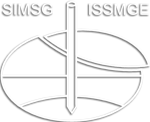Geoenvironmental characterization of minus 6mm fraction obtained by on-site trommeling of legacy waste at a MSW dumpsite in India
Geoenvironmental characterization of minus 6mm fraction obtained by on-site trommeling of legacy waste at a MSW dumpsite in India
A full-scale landfill mining (LFM) of an old MSW dump (>60m high) containing more than 6 million tonnes of legacy waste is in progress in the capital city of India. In LFM, a mechanically operated rotating cylindrical screen called trommel segregates the excavated waste into different size fractions such as >30mm fraction composed of construction and demolition (C&D) fraction, and refuse-derived fuel (RDF), 30-6mm fraction and <6mm fraction. The <6mm fraction, referred to as soil-sized fraction (SSF) in the present study, was analysed for geoenvironmental characteristics. Organic content (OC), pH, electrical conductivity (EC), colour, total dissolved solids (TDS), sulphates, chlorides, leachable, and total heavy metals were assessed to evaluate the contamination potential of SSF. It has been observed that the SSF has significantly higher dissolved solids (TDS=14920-22000mg/kg, sulphate=3280-7000mg/kg, chloride=3100-4100mg/kg), EC (1.7-2.3mS/cm), OC (7.7% to 16.2%), undesirable colour (110-490 PCU) compared with the background level. Although the total content of heavy metals in the soil-sized fraction (SSF) is significantly higher than that of the background soil, the concentrations of cadmium (Cd), copper (Cu), nickel (Ni), and zinc (Zn) in the water extracts are only marginally elevated. The study has revealed that though leachable heavy metals are not alarmingly high in SSF, care should be taken to mitigate the elevated organic content, high dissolved solids, and undesirable colour emanating from the SSF.
Keywords: landfill mining; legacy waste; soil-sized fraction; contamination potential; reuse; off-site application
D. Parida; D. Bansal; Manoj Datta; G. V. Ramana
9th International Congress on Environmental Geotechnics (ICEG2023)
Advances in Testing and Material Characterization
https://doi.org/10.53243/ICEG2023-270
